
Interviews with the Movers and Shakers Of Mixology
Hosted by Blair Frodelius of Good Spirits News

A Conversation with Paul Harrington
I knew I was meant to do something in the world of cocktails." - Paul Harrington
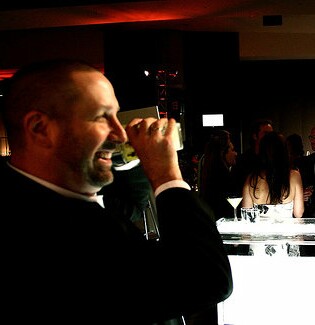 Paul Harrington
was on the cutting edge of the cocktail revival back in
the heady days of the late 90's bar scene. As a working bartender
who also wrote the Hotwired cocktail columns and did frontline research
on the history of mixology; he was well suited to write one of the
books that is still recommended by respected cocktail authorities
everywhere, "Cocktail: A Drinks Bible for the 21st Century".
Originally published in 1998, I asked Paul how much has changed in the
cocktail landscape over the past 12 years...
Paul Harrington
was on the cutting edge of the cocktail revival back in
the heady days of the late 90's bar scene. As a working bartender
who also wrote the Hotwired cocktail columns and did frontline research
on the history of mixology; he was well suited to write one of the
books that is still recommended by respected cocktail authorities
everywhere, "Cocktail: A Drinks Bible for the 21st Century".
Originally published in 1998, I asked Paul how much has changed in the
cocktail landscape over the past 12 years...
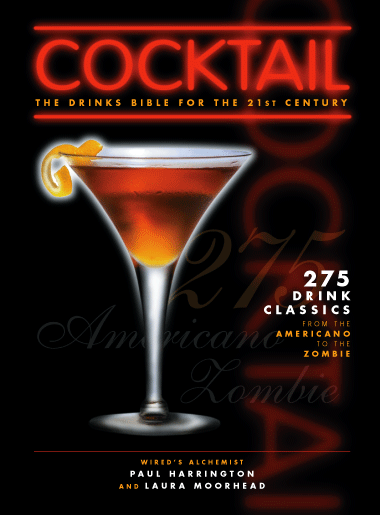 GSN: The book includes 64
specific cocktails with historical annotations, how did you narrow your
choices down to these particular cocktails?
GSN: The book includes 64
specific cocktails with historical annotations, how did you narrow your
choices down to these particular cocktails?PH: In 1997, the choice of ingredients for classic cocktails was fairly limited, but the goal was to teach the reader the aesthetic of classic aperitif cocktails. The number 64 was defined by the number of color pages the editor had allotted us in the budget. The final selection process was fairly involved. We wanted a wide enough range of drinks that people who only looked at pictures would have a wide breadth of experience. I wanted to make sure that the 64 drinks would cover almost every occasion. Each of the featured drinks had to have a compelling, verifiable story. The ingredients for those drinks had to be relatively easy to find. Those 64 drinks were the calling card and I think still define many of the great bars that we have today.
GSN: When I first got a copy, I literally went through trying out all 64 recipes. Did you experiment with different ratios and variations of each of these, or did you go with the recipes from original cocktail guidebooks?
PH: Since I was a working bartender, I played with the recipes to find variations that matched the current taste trends. It was sort of a contentious issue with our food editor at Viking. She wanted all of the recipes to have the same volume of liquid relative to the glass type. I personally tested every recipe and adjusted as I saw fit and told her there was no way I was changing the recipes. Ultimately, I won the argument.
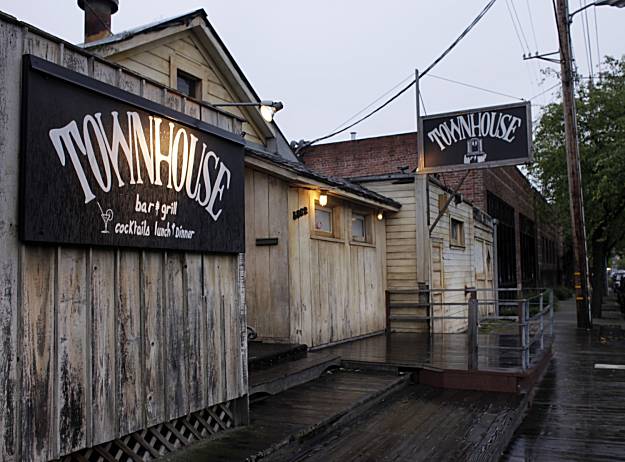
GSN: Your version of the Cuba Libre calls for the addition of gin. How did you come up with this recipe (which I love by the way!)?
PH: There was a software engineer who came into the Townhouse Bar & Grill in Emeryville (at left). He was an American but his wife was from Venezuela. I forget their names, but that is the way she liked them made. As soon as I tasted it, I adopted it as a favorite and began spreading the news. I haven’t found too many people who don’t feel it is an improvement over the basic recipe.
GSN: The Drink with No Name aka The Harrington is another great cocktail from the book that I enjoy. Do you have any other original creations you're proud of that you can share with our readers?
PH: The drink that I am most proud of is the Jasmine. It is ironic that the drink named after me contains vodka as the base spirit. As you may recollect, I am/was a proponent of drinking some of the more robust spirits. The Jasmine is a mix of gin, Cointreau, Campari and lemon juice. When made correctly it should be light pink and taste like fresh squeezed grapefruit juice. I have met many people who have thanked me personally for the cocktail, as it introduced them to gin.

Jasmine
1.5 ounces gin
0.25 ounce Cointreau
0.25 ounce Campari
0.75 ounce lemon juice
Shake with ice. Strain into a cocktail glass.
Garnish with a lemon twist.
GSN: Back in the 1990's there was a relative dearth of information available on classic cocktails, how did you do your research on the drinks?
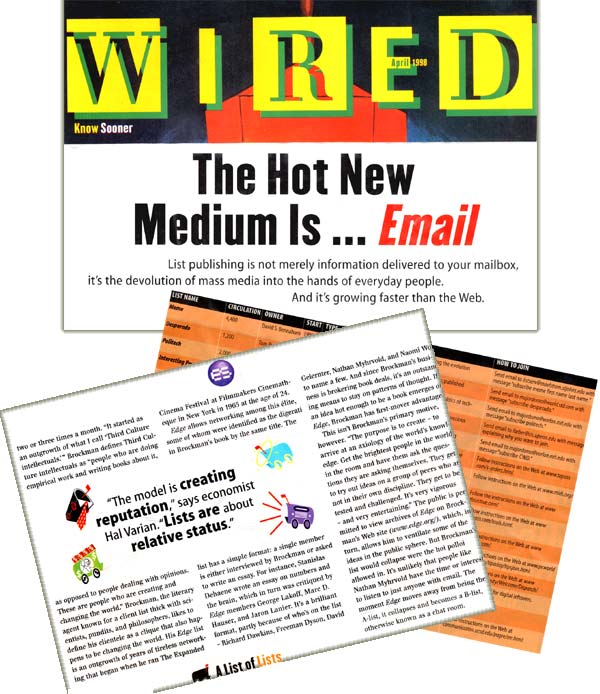 PH: I
checked out rare books
from the Doe Library on the UC Berkeley campus and scoured the shelves
of used book stores looking for anything about cocktails. Once the web
site was in production and later the book, we had a team of 12-20 fact
checkers that would make phone calls, read old newspapers, etc. to make
sure we had the story straight. One great aspect of publishing on the
internet is that you get immediate feedback on any statements that are
incorrect. We had a very vibrant online community that was always
sending us mail.
PH: I
checked out rare books
from the Doe Library on the UC Berkeley campus and scoured the shelves
of used book stores looking for anything about cocktails. Once the web
site was in production and later the book, we had a team of 12-20 fact
checkers that would make phone calls, read old newspapers, etc. to make
sure we had the story straight. One great aspect of publishing on the
internet is that you get immediate feedback on any statements that are
incorrect. We had a very vibrant online community that was always
sending us mail.GSN: How did you end up working for Wired, and what had you done previously in the cocktail world?
PH: This is a bit of a story but I will try and start from the very beginning.
The first drink I ever made for a patron was a Manhattan at Charlie’s Bar & Grill in Bellevue, WA. It was the summer in 1988 and I was just heading back to Berkeley after a one year hiatus. I only worked one shift as a bartender at Charlie’s but it gave me enough experience that I could list it as experience on my resume.
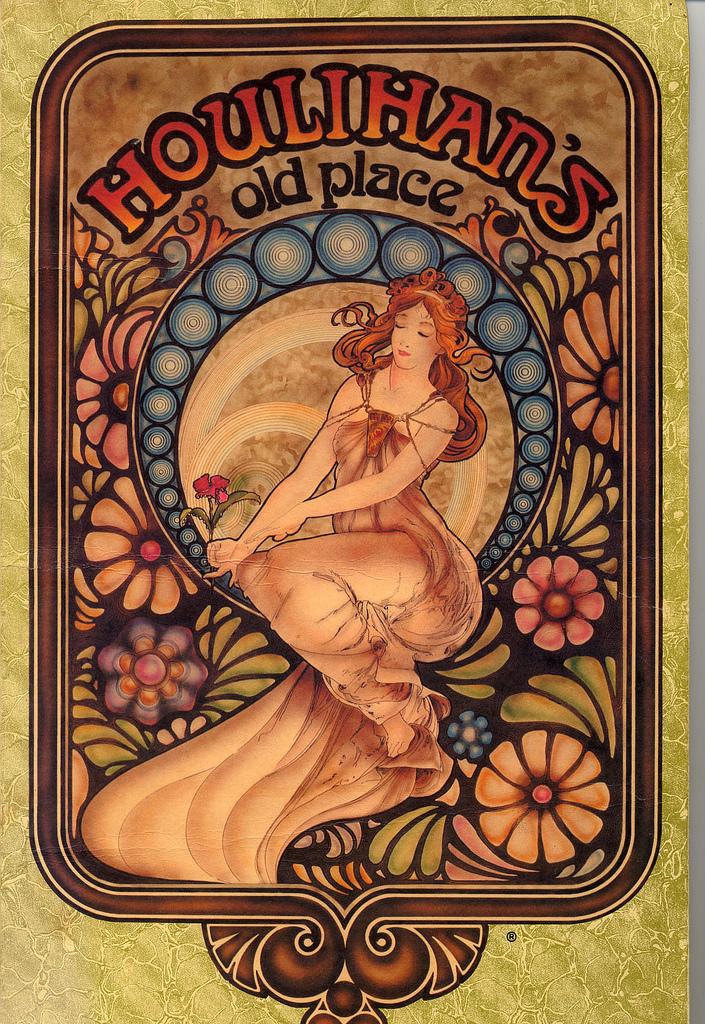 Upon returning to the SF Bay
Area, I took a job at Houlihan’s on
Fisherman’s Wharf (menu cover at
right). I started as a waiter and bar back. As shifts opened
up in the service bar, I got my chance and was soon behind the long bar
at weekend shifts. I truly loved the atmosphere and the chance to
entertain and serve people, although the drinks we were forced to make
were unfulfilling. I soon moved up to “bar manager” and was training
all new hires. One bartender that I remember in particular was Thomas
Southwell. He had come from TGIF but had over 10 years more experience
than I did. As I was training him in the ways of Houlihan’s he taught
me some invaluable lessons in portion control and presentation that I
would have never learned otherwise.
Upon returning to the SF Bay
Area, I took a job at Houlihan’s on
Fisherman’s Wharf (menu cover at
right). I started as a waiter and bar back. As shifts opened
up in the service bar, I got my chance and was soon behind the long bar
at weekend shifts. I truly loved the atmosphere and the chance to
entertain and serve people, although the drinks we were forced to make
were unfulfilling. I soon moved up to “bar manager” and was training
all new hires. One bartender that I remember in particular was Thomas
Southwell. He had come from TGIF but had over 10 years more experience
than I did. As I was training him in the ways of Houlihan’s he taught
me some invaluable lessons in portion control and presentation that I
would have never learned otherwise.After a couple years at Houlihan’s I was ready to move on. I read an ad in the paper looking for a bartender/manager for a restaurant in Emeryville one morning after having breakfast at Rick & Ann’s in the Berkeley Hills. I met with Joseph LeBrun, the owner of the Townhouse Bar & Grill, and we immediately hit it off. I took the job and was put in charge of a lovely little bar that helped service the needs of some sophisticated diners. I immediately began experimenting with more classic drinks and improving the products we carried behind the bar. The fact that Joseph is French, helped me develop my aesthetic for product and taste.
It was at the Townhouse that I met Evelyn, Bucci, Les and Paul. These were a group of friends, (all chefs and/or
restaurateurs) from NY who just happened to be college friends of Dale DeGroff. It was this group who would come in to the bar after closing their place, that helped educate, challenge and inspire me. They eventually introduced me to Dale which was a big stepping stone in my development.
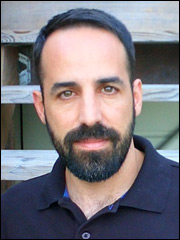
After the Townhouse I did a brief stint at Enrico’s in SF which is where I met Gary Wolf (pictured at right) while he was doing a restaurant review. It was Gary who introduced me to the press in SF and was my connection to Hotwired. If it weren’t for Gary and Hotwired, the Alchemist persona would have never developed to the degree that it did.
GSN: How did you get the nickname, "The Alchemist"?
PH: Gary Wolf used the term when he was writing for the SF Weekly. He was doing a review on the bar I worked in and writing a story about summer cocktails in SF. He then went to work at Hotwired and brought be on as a consultant for the Cocktail web site. It was Laura Moorhead that encouraged me to do a weekly column which was then named the Alchemist.
GSN: What part did Laura Moorhead play in the book?
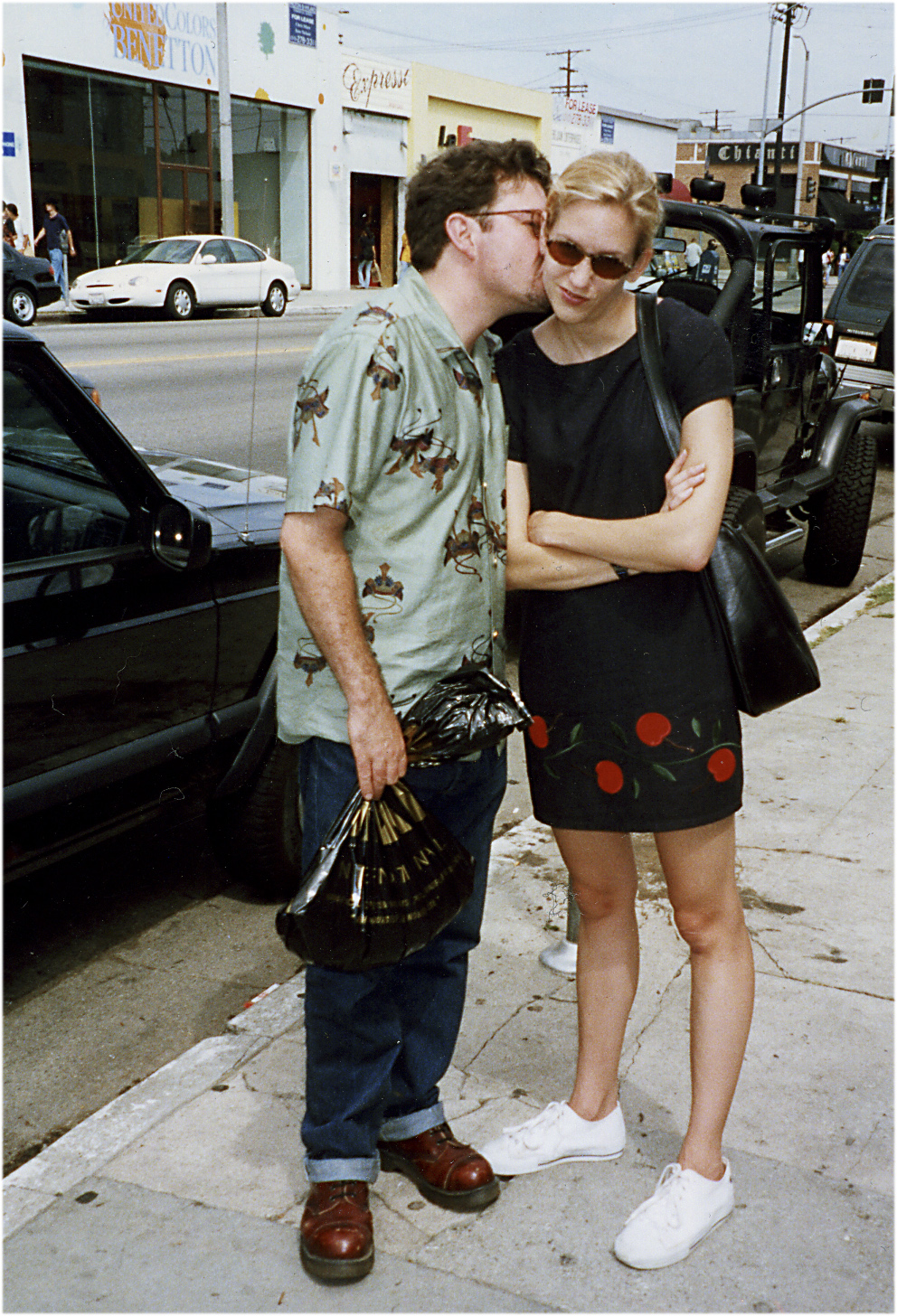 PH: Laura Moorhead and
Graham
Clarke (pictured at left),
had the original idea for the web site and pitched it to Gary
Wolf who was Laura’s boss at the time. Laura was a copy editor at
Hotwired and Graham was her live in boyfriend. (They have since married
and have two wonderful children.) Laura, Graham and I brainstormed a
lot of the original format for the web site, but it was Laura’s editing
that gave a voice to the personal drink aesthetic that I had created at
the Townhouse and Enrico’s. When we started the project, she knew
nothing about making drinks and I knew very little about journalism. We
both took some valuable experiences from the efforts.
PH: Laura Moorhead and
Graham
Clarke (pictured at left),
had the original idea for the web site and pitched it to Gary
Wolf who was Laura’s boss at the time. Laura was a copy editor at
Hotwired and Graham was her live in boyfriend. (They have since married
and have two wonderful children.) Laura, Graham and I brainstormed a
lot of the original format for the web site, but it was Laura’s editing
that gave a voice to the personal drink aesthetic that I had created at
the Townhouse and Enrico’s. When we started the project, she knew
nothing about making drinks and I knew very little about journalism. We
both took some valuable experiences from the efforts.As far as the book goes specifically, Laura edited the entire piece and organized a group of authors who were focused on gathering the histories of each of the drinks and compiling the glossary. I was responsible for the first half of the book, the side bars of the drinks and testing of the recipes. The voice of the Alchemist would have never been as strong if it were not for the efforts of Laura.
GSN: In 1999, your book was nominated for a James Beard Foundation award
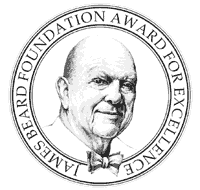 for best new
wine and
spirits publication. Do you think this finally gave the cocktail
some
serious attention in the world of food and beverage?
for best new
wine and
spirits publication. Do you think this finally gave the cocktail
some
serious attention in the world of food and beverage?PH: I agree with the statement, as you can almost track the coverage cocktails have received in food magazines with the initial publication of the book. It is over 10 years out of print, and I am still finding out just how big of an impact the book and the website had on the bartenders and bar owners of today. I love visiting a large city and finding the bars that have been directly influenced by the book and/or the web site.
GSN: Unfortunately, finding a copy of your book is getting harder as it has gone out of print and copies are selling for $50 and up if you can find one. Any chance that you might publish an updated and expanded version?
PH: The contractual situation between myself, Hotwired and Viking probably makes it unlikely that it will come back in to print in its current form. I can see that there would be a market for an expanded version, but I haven’t put any effort towards seeing if the publisher would be interested.
GSN: What are you doing now? Have you retired from the cocktail industry, or are you still writing or teaching about bartending?
PH: Bartending for me was a job through college and a hobby that I greatly enjoyed. I was lucky enough to be in the right place at the right time so that I could put my education behind the bar into published words. I am very thankful for that opportunity and for the people who include me in the cocktail community that continues to grow. The cocktail community should be applauded for their efforts in raising the bar and the level of professionalism. In the last few years I have been to some bars that blow my mind.
 I
wouldn’t say I have
retired from the cocktail industry, but I am an architect in Spokane,
WA (OMS Architecture Interiors).
I mix drinks professionally once or twice a year, usually for
private parties or fundraisers. I stay connected to the industry via
email, blogs, etc. and keep a very well stocked bar at home. I am
just
starting to consult on products and bar concepts, and. I hope to have
my own bar in the next 3-5 years.
I
wouldn’t say I have
retired from the cocktail industry, but I am an architect in Spokane,
WA (OMS Architecture Interiors).
I mix drinks professionally once or twice a year, usually for
private parties or fundraisers. I stay connected to the industry via
email, blogs, etc. and keep a very well stocked bar at home. I am
just
starting to consult on products and bar concepts, and. I hope to have
my own bar in the next 3-5 years.PH: As far as bar design goes I would say that bars today are designed more for people sitting at tables instead of bars, which really limits the role the bartender has in serving clients. Another problem I see is that many times the back bar is designed more for aesthetics than function. Bottles are placed out of reach and there isn't enough space
to properly stock the plethora of ingredients needed to create many of the classics.
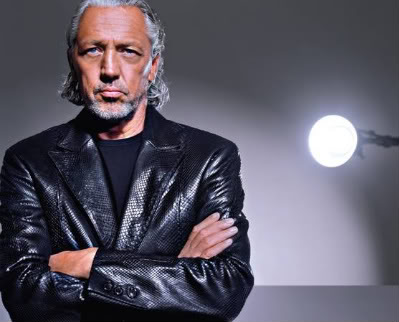
PH: My favorite memory has to be meeting Charles Schumann (pictured at right) at his bar in Munich in ’93 or ‘94. Watching his staff in their pressed white coats, working a room filled with cocktail glasses was a sight to behold.
GSN: Who are some of your mentors and inspirations?
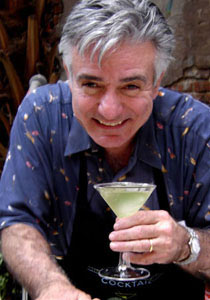 PH: Dale DeGroff (pictured at left) and the
Rainbow Room was my greatest inspiration. I have had the honor to have
Dale as a guest at my bar, although I have never had the chance to mix
drinks with him. After I had the unlikely opportunity to meet both Dale
and Charles, I knew I was meant to do something in the world of
cocktails. I had a few uncles who were bar owners in the northwest and
my grand parents, who I never met, were musicians in speakeasies during
prohibition. (I sort think I was born for the job.)
PH: Dale DeGroff (pictured at left) and the
Rainbow Room was my greatest inspiration. I have had the honor to have
Dale as a guest at my bar, although I have never had the chance to mix
drinks with him. After I had the unlikely opportunity to meet both Dale
and Charles, I knew I was meant to do something in the world of
cocktails. I had a few uncles who were bar owners in the northwest and
my grand parents, who I never met, were musicians in speakeasies during
prohibition. (I sort think I was born for the job.)GSN: Lastly, what do you think is the origin of the word "cocktail"?
PH: I don’t remember the story verbatim, but I think that the story of the French officers who exclaimed “Vive le Coq tale” is my favorite.
You can occasionally find used copies of "Cocktail: A Drinks Bible for the 21st Century"
on Amazon.com or Ebay, along with other online used bookstores.
It is a book well worth re-reading if you already have a copy.
Paul can be contacted here
Paul works for OMS Architecture Interiors
Blair Frodelius lives in
upstate New York and is the
editor of Good Spirits News. He is also a full-time professional
musician
and is co-founder of Out of the Box Entertainment. He can be
reached at
goodspirits@frodelius.com
Good Spirits News

